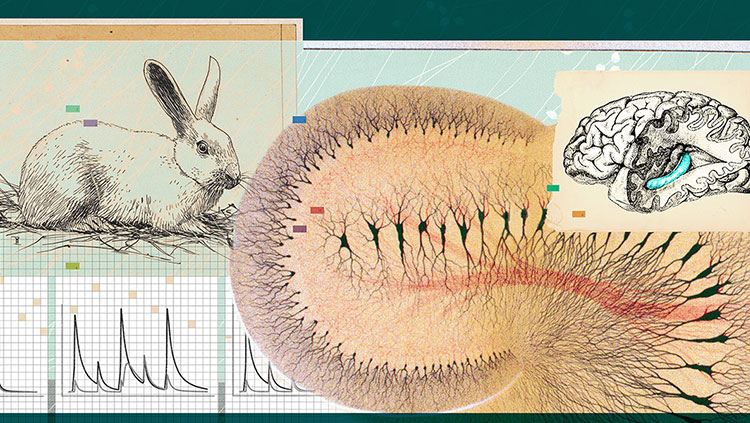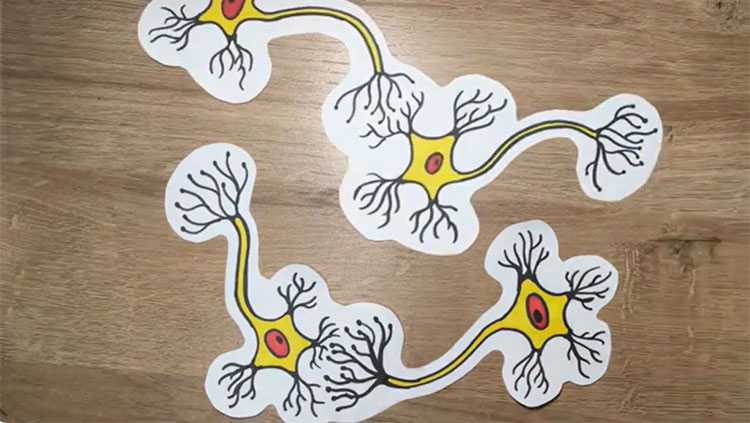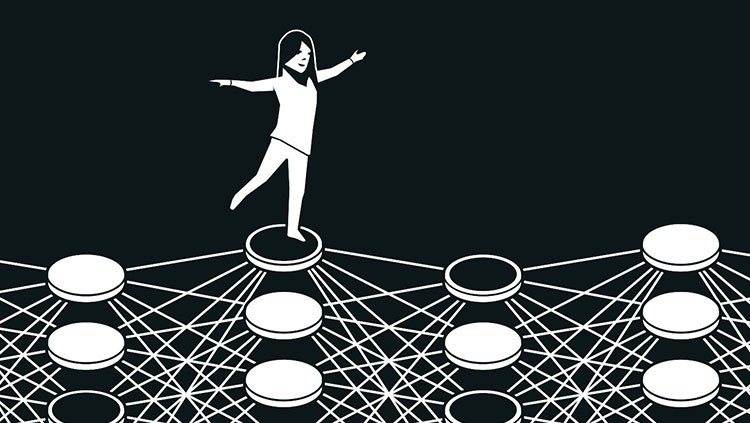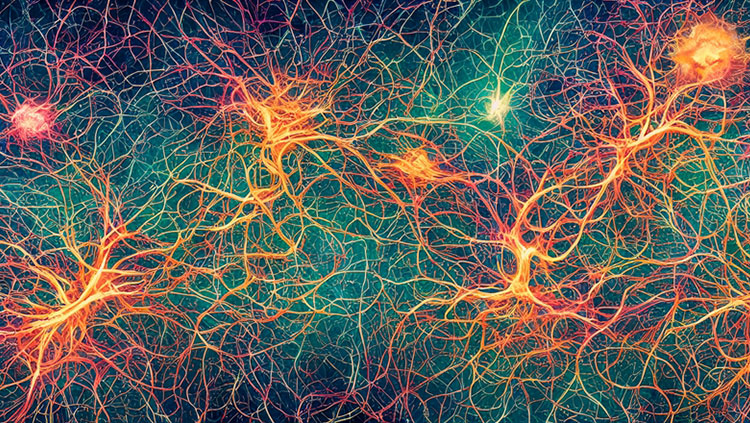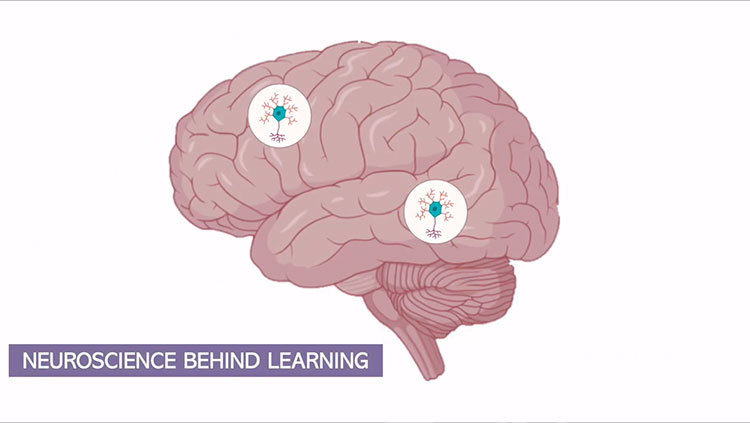The Neuroscience Behind the Spacing Effect
- Published4 Mar 2021
- Author Helen Santoro
- Source BrainFacts/SfN

This school year, classrooms look very different. Chalkboards and in-person instruction have been replaced by PowerPoint slides and video conferences as many students shifted to virtual learning. While a debate rages over which type of education is best, a more fundamental question about learning in either venue has more or less been resolved: What is the best way for students to retain information?
The answer? Simply, space out multiple study sessions over a long period. Called the “spacing effect,” hundreds of studies demonstrate it enhances long-term learning and retention — and is far better than cramming the night before an exam.
A long, spaced-out history
More than 130 years after German psychologist Hermann Ebbinghaus first reported on the phenomenon, scientists continue to demonstrate the spacing effect’s benefits. In a 2015 study, for example, researchers at York University in Toronto found students spacing out a lecture and a review quiz boosted test performance. The students attended a 45-minute lecture on meteorology. Half the students took an online quiz one day after the lecture, while the other half took the quiz eight days later. All of the students took a final test five weeks after their respective quizzes.
Students who took the quiz eight days after the lecture performed significantly better on the final test than the other students, suggesting that spaced learning can enhance long-term memorization.
“When we space out our learning periods, they are much more effective for learning than if you have those repetitions in close sequence,” says Sean Kang, a cognitive psychologist at the University of Melbourne who wasn’t involved in the study.
And the spacing effect isn’t just successful in science classes. In his own research, Kang and his colleagues found the technique helps students memorize Japanese vocabulary. Other studies show it’s beneficial for adults who are learning English as a second language.
What’s happening in the brain
Animals learn better when training is spaced out as well. Fruit flies, for instance, will learn to avoid a specific odor if they get a shock when they smell it. If they get 10 odor-shock pairings, one right after the other, they’ll avoid the odor for three days. But if the training is spaced out, they’ll avoid it for a week a more – a long time, considering their lifespan is only about 50 days. Clues to the spacing effect’s neurobiology can be found not only in the brains of fruit flies but also in sea slugs and rodents.
At a cognitive level, spaced training may provide more opportunities to practice what we’ve just learned, both consciously and unconsciouslyOne working theory holds that spaced learning activates cellular processes needed to build and maintain long-term memories. For example, it activates transcription factors – proteins that bind to DNA and control what genes are activated. This, in turn, determines what proteins the cell makes. For example, one transcription factor called CREB, or cyclic AMP response element-binding protein, switches on a host of genes thought to be involved in strengthening connections between neurons.
But it takes time for CREB to work its molecular alchemy. Spacing out learning sessions may give CREB more time to do its thing, each learning period building on what came before it.
At a cognitive level, spaced training may provide more opportunities to practice what we’ve just learned, both consciously and unconsciously. And, retrieving the information may strengthen the neural pathways undergirding the memory, making it easier to cue up later.
Many things are going on in the brain that might account for the spacing effect, from changes in gene expression up to higher-level cognitive processes and everything in between. But figuring out how they all fit together and whether one is more important than another remains a challenge.
“The problem is there are many levels of analysis, and we don’t understand very much at all,” says Sheena Josselyn, a neuroscientist at the Hospital for Sick Children in Toronto.
Applying the spacing effect in the classroom
We may not know why the spacing effect happens, but centuries of research shows it’s real and can help students learn. Teachers can incorporate this learning technique in the classroom in several ways, says Kang, who taught education classes for seven years at Dartmouth College before moving to the University of Melbourne. One method he’s used is introducing a topic in week one and then reintroducing it later in the semester. That way, students can review material that they encountered a few weeks prior, he explains.
But overhauling a whole lesson plan isn’t always possible. An easier option is to create homework assignments or projects that require students to apply concepts they learned earlier in the term. “Spaced repetition doesn’t just mean [students are] re-reading or re-hearing info,” Kang says. “It can also involve retrieving information through memory again and again over time and applying what they’ve learned.”
Encouraging students to space out their learning sessions on their own is also helpful. “Learning goes on outside of the classroom,” Kang says. “It’s the role of the teachers to teach students about these strategies so that they can incorporate them on their own.”
For Patti Simone, a psychologist who has been teaching at Santa Clara University in California for 27 years, convincing students to space out their learning is difficult. “Even though students know [the spacing effect] is effective, most don’t do it,” says Simone. This is likely because spaced learning “is a slower, harder way to remember information.”
The same strategies and challenges remain true in a virtual learning environment, which students will likely be experiencing to varying degrees for the next couple of years. “One thing to keep in mind is that the principles of learning — how we learn as humans — is largely the same whether we are learning from a computer or a classroom,” Kang says. “The general underlying principles are the same, and we need to pay attention to them.”
Additional reporting by Alexis Wnuk
CONTENT PROVIDED BY
BrainFacts/SfN
References
Bird, S. (2010). Effects of distributed practice on the acquisition of second language English syntax. Applied Psycholinguistics, 31(4), 635–650. https://doi.org/10.1017/S0142716410000172
Feng, K., Zhao, X., Liu, J., Cai, Y., Ye, Z., Chen, C., & Xue, G. (2019). Spaced Learning Enhances Episodic Memory by Increasing Neural Pattern Similarity Across Repetitions. Journal of Neuroscience, 39(27), 5351–5360. https://doi.org/10.1523/JNEUROSCI.2741-18.2019
Kang, S. H. K., Lindsey, R. V., Mozer, M. C., & Pashler, H. (2014). Retrieval practice over the long term: Should spacing be expanding or equal-interval? Psychonomic Bulletin & Review, 21(6), 1544–1550. https://doi.org/10.3758/s13423-014-0636-z
Kapler, I. V., Weston, T., & Wiseheart, M. (2015). Spacing in a simulated undergraduate classroom: Long-term benefits for factual and higher-level learning. Learning and Instruction, 36, 38–45. https://doi.org/10.1016/j.learninstruc.2014.11.001
Naqib, F., Sossin, W. S., & Farah, C. A. (2012). Molecular determinants of the spacing effect. Neural Plasticity, 2012, 581291. https://doi.org/10.1155/2012/581291
Philips, G. T., Kopec, A. M., & Carew, T. J. (2013). Pattern and predictability in memory formation: From molecular mechanisms to clinical relevance. Neurobiology of Learning and Memory, 105, 117–124. https://doi.org/10.1016/j.nlm.2013.05.003
San, M. A., Rela, L., Gelb, B. D., & Pagani, M. R. (2017). The spacing effect for structural synaptic plasticity provides specificity and precision in plastic changes. Journal of Neuroscience. https://doi.org/10.1523/JNEUROSCI.2607-16.2017
What to Read Next
Also In Learning & Memory
Trending
Popular articles on BrainFacts.org





